The best brawler series ever
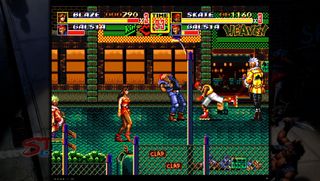
We know Sega had the superior version of Mortal Kombat, and declaring a winner between the premiere beat-em-ups is pretty easy too. The contenders were Sega's Streets of Rage and SNES's Final Fight. In 1999, you could play a botched single-player version of Final Fight sans Guy (because who plays a beat-em-up with friends?) or the unforgettable Streets of Rage, which featured co-op play and a magical cop car that could shoot missiles up an elevator shaft. The next year, Streets of Rage II added Street Fighter-esque special moves to a batch of new fighters, including a pro wrestler and a kid on rollerblades (it was acceptable in the 1990s). By 1993, SNES owners finally had a competent brawler when Final Fight II came to the US, but by then most were on the Streets of Rage hype train, scanning issues of GamePro for screens of the robotic old dude and kangaroo in the trilogy-capper.
A great Contra and the even greater Gunstar Heroes
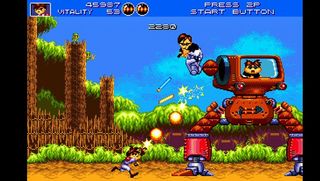
For as much as the gaming world loved Contra on the NES, side-scrolling arcade shooters weren't all that plentiful on 16-bit platforms. While the SNES had the stellar Contra III: The Alien Wars early in its lifespan, even greater things came to those who waited (and owned a Sega Genesis). In 1993, Genesis owners got a Contra all their own with Hard Corps; quite possibly the most replayable entry in the series due to branching paths and multiple endings. A year after that, another exclusive landed in the form of Gunstar Heroes, which I dare say remains the best side-scrolling shooter to date. The gorgeous sprites, the insane weapon combos, and the uniquely animated bosses make every minute of arcade action unforgettable, and for the first decade of its existence, the only place Westerners could play it was on Sega's 16-bit console.
Sweet Sonic spinoffs

Believe it or not, there was a point in time when Sega was actually a bit conservative when it came to mass marketing Sonic. While Nintendo put Mario and friends on any game cover it could (leading to less-than-stellar titles like Mario is Missing and Mario's Pre-School Fun), Sega usually made sure the premise was a fun one before dropping the stars of its prized platformer into new genres. Sonic Spinball added a neat twist on the standard pinball formula, while Dr. Robotnik's Mean Bean Machine made the Puyo Puyo puzzle series a much easier sell to western audiences. Plus, it's the only official game appearance of Robotnik's so-bad-they're-good rooster and drill-handed cronies.
EA's awesome war games
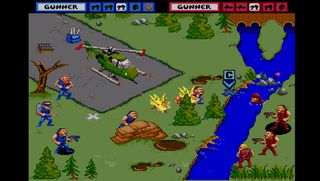
Long before EA even conceived of recreating the Normandy invasion, their 16-bit efforts were commendable, original, and fun. General Chaos actually managed to deliver a fun, lighthearted take on ground-based combat, but the true war sim for 16-bit fans was the Strike series. Starting with the timely Desert Strike in 1992, EA put out a trio of helicopter-based combat games where you basically won various wars with a single chopper, taking out tanks, troops, and buildings with a machine gun and missiles while picking up MIA troops and supplies with a winch.
Downloading games a decade early with The Sega Channel
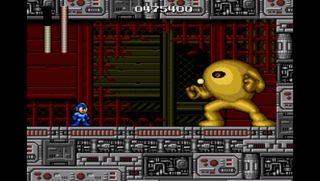
Did you know there was a Mega Man game available for the Genesis in the US? You probably didn't realize that back in the mid-90's because it was never available on cartridge in the States. Instead, you could download it to your system's flash memory via the Sega Channel, a service that allowed subscribers to check out the system's most popular games and a few other never-on-cartridge releases like Alien Storm and Pulseman (from future Pokemon developer Game Freaks) via your coaxial cable connection. Few US gamers had access to the service, but those that did got an early taste of the online future that would become standard over a decade later.
Playing your Genesis games on the go (sorta) with Nomad
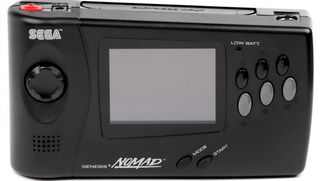
It may have eaten batteries like nobody's business, but Sega's Nomad was a sight to behold when it released in 1995. Just over a half-decade past the Genesis' release date, you could play almost any cartridge on the go, provided you had a power source to plug into or could find another six batteries within two hours of play time. If you ignored the fact that you couldn't attach it to a Sega CD or 32X, it was pretty much a functioning home console as well, since it had an AV-out to connect to a TV and a controller input to allow a second player to join in the fun. At last, you could bring OutRun along on a family vacation.
Genesis does what Ninten-don't
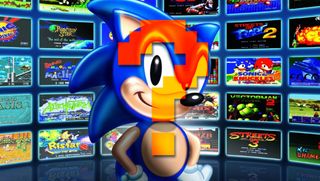
What was your favorite thing about the Sega Genesis? And remember, this is a safe place, so if you're like me and have a weird fondness for Altered Beast and Sword of Vermillion, you can talk about it in the comments below. We won't judge you.
What we will judge, however, is our intensely curated list of the top 50 best Genesis games ever as well as ranking the 25 best Sonic games. SEGA!

